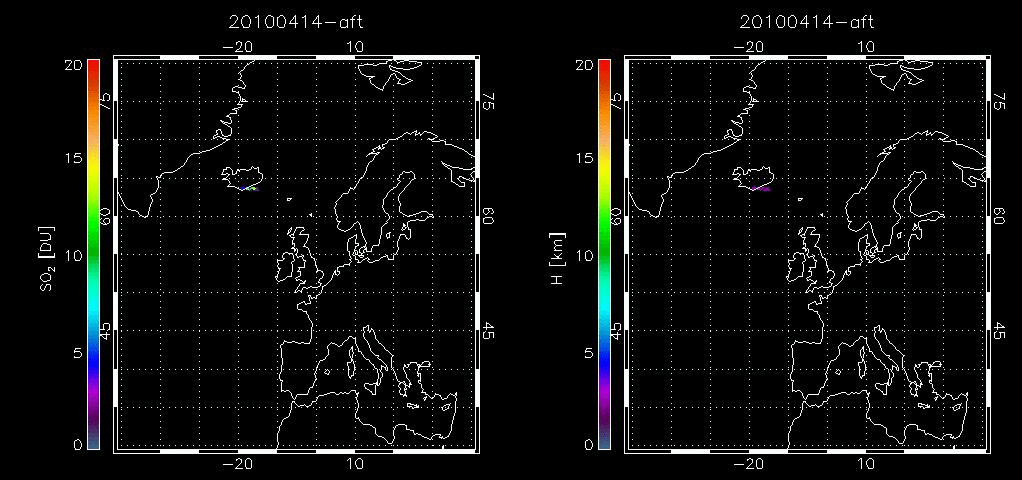Eyjafjallajokull
| Eyjafjallajökull | |
|---|---|
| Elevation | 1666 m |
| Latitude | 63° 38′ ″ N |
| Longitude | 19° 36′ ″ W |
Eyjafjallajökull is a is a stratovolcano, located close to Iceland’s southern coast.
Eruption: April and May 2010
The volcano entered a precursor eruptive phase on 20 March 2010 that included lava flows but no significant ash and SO2 emission. Following earthquake activity an explosive eruption began on the 14 April 2010. The explosive part of the eruption can be divided into three phases (Zehner, 2012; Stevenson et al., 2012; Petersen et al., 2012):
Phase I: 14 – 18 April. Phreatomagmatic eruption phase; ice and water directly in contact with the fresh magma in the vent. Large amount of ash injected in the atmosphere, as well as steam plumes. The injection altitude of the plume is estimated between 2 and 10 km height (Marzano et al, 2011; Stohl et al., 2011)
Phase II: 18 April – 4 May. Magmatic eruption phase; lower intensity of the eruption; altitude of the eruption column is between 2 and 5 km (Zehner et al, 2010; Stohl et al., 2011).
Phase III: 5 – 24 May. Magmatic eruption phase; more intense explosive phase; ash production and SO2 increase; eruption column altitude is reported between 4 and 10 km (Stohl et al., 2011).

IASI SO2 amount and altitude retrieved following Carboni et al 2012. [1]
Analysis of the IASI retreival for Eyjafjallajokull eruption, together with estimate of total mass of SO2 and comparison with other satellite data in Carboni et al 2012.
Links
JGR Special Issue: The Eyjafjallajökull Volcanic Eruption in 2010